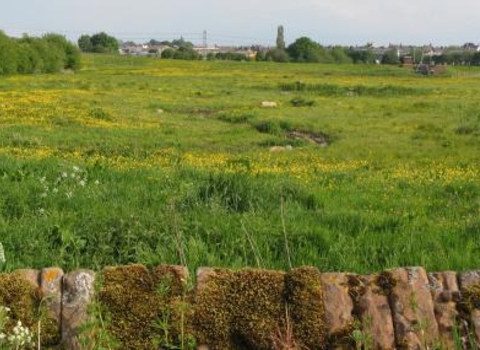Slowing the flow
As well as storing carbon, nature can also help to reduce the impact of the effects of climate change for us and for wildlife.
Storms which cause flooding in homes and businesses have increased in Cumbria in the last decade.
Peatlands hold large amount of water and during periods of high rainfall they can both hold back water and also slow the flow of the water coming off the hills.
Damaged peatlands cannot hold the same amounts of water, and areas that contain drains actually speed up the flow. This means that, during high rainfall events, water isn’t held back and released slowly but flows immediately into rivers, increasing the flooding risk downstream.
Blocking drains slows this run-off and keeps floodwater on the fells for longer.
Donate to fight the climate crisis
Slow the Flow films
Even wilder ideas about flooding
The following four stop-motion animated films have been produced as a sequel to the original award-winning films from 2022 and are the result of an exciting collaboration between Cumbria Wildlife Trust and Cumbria Innovative Flood Resilience project, funded by the Environment Agency’s £200m Flood and Coastal Innovation Programmes.
The films were made in partnership with the EA, RSPB, Wild Ennerdale Partnership, NFU and SEPA, who provided technical input and voiced some of the characters.
Wood you believe it, directed by Cadi Catlow (2024).
How woodlands are a natural flood defence. EPK (electronic Press Kit)
Home and Dry, directed by Cadi Catlow (2024).
Helping wildlife at home.
Dam Fine Ideas, directed by Cadi Catlow (2024).
How nature is impacted by man-made structures on rivers.
It doesn't have to cost the earth, directed by Cadi Catlow (2024).
How soil helps to prevent flooding.
Making of Cumbria Wildlife Trust animated films 2024, directed by Cadi Catlow (2024).
Wild ideas about flooding
The following four short films, produced by the Environment Agency, explain how we can slow the flow and help defend our communities from flood water.
Flooding effects everyone, directed by Cadi Catlow (2023).
Farmland - a natural solution to climate change.
For Peat's sake, directed by Cadi Catlow (2023).
Peatland - a natural solution to climate change.
Flood, Plain & Simple, directed by Cadi Catlow (2023).
Floodplains - a natural solution to climate change.
Water We Going To Do, directed by Cadi Catlow (2023).
Rivers - a natural solution to climate change.
Slowing the flow at Eycott Hill Nature Reserve
Cumbria Wildlife Trust has blocked 20 artificial ditches at Eycott Hill Nature Reserve that were draining water from the uplands into Naddles Beck.
The work involved using a digger to build long dams across manmade channels, before replacing the vegetation to strengthen the dam.
Side channels were added where possible to divert water from the main ditch so it soaks into the surrounding land, helping to slow the flow of water through the catchment.

Volunteers from Kendal Conservation Volunteers making natural flood defences above Kendal © Cumbria Wildlife Trust
Former Kendal reservoir holds back storm water
Cumbria Wildlife Trust, working with volunteers from Kendal Conservation Volunteers created a new natural flood defence project at Birds Park, to the east of Kendal, to help research the effectiveness of slowing the flow of floodwater from Stock Beck East down to the Sandylands estate in Kendal.
A series of willow ‘hydro-hedges’ were built in the basin of a former Kendal reservoir, which could hold back up to 5,000 cubic metres of water during a storm event like Storm Desmond.
Any stored water will release slowly after the flood peak, reducing the impact on properties during a storm event. The reservoir is no longer in use and is owned by United Utilities.

Penrith flood basin created wetland for wildlife
A flood basin was created on Thacka Beck, on the outskirts of Penrith, to slow the flow of water into Penrith during storms.
Built by the Environment Agency, the flood basin has helped to raise the water table and created areas of wet grassland either side of the re-routed beck, which is rich in invertebrates and vital for many breeding and feeding birds such as teal and snipe.
Fighting the Climate Crisis:
- Nature based solutions (https://www.cumbriawildlifetrust.org.uk/fighting-climate-crisis/nature-based-solutions)
- Blue carbon solutions (https://www.cumbriawildlifetrust.org.uk/fighting-climate-crisis/nature-based-solutions/blue-carbon)
- Green carbon solutions (https://www.cumbriawildlifetrust.org.uk/fighting-climate-crisis/nature-based-solutions/green-carbon)

Make that difference for the wildlife you love
- Free entry to our nature reserves.
- Free nature reserve guide.
- Cumbrian Wildlife magazine three times a year with accompanying 'What's On' guide.
- Plus more! From just £3.50 a month/£42 a year (based on Individual membership)
